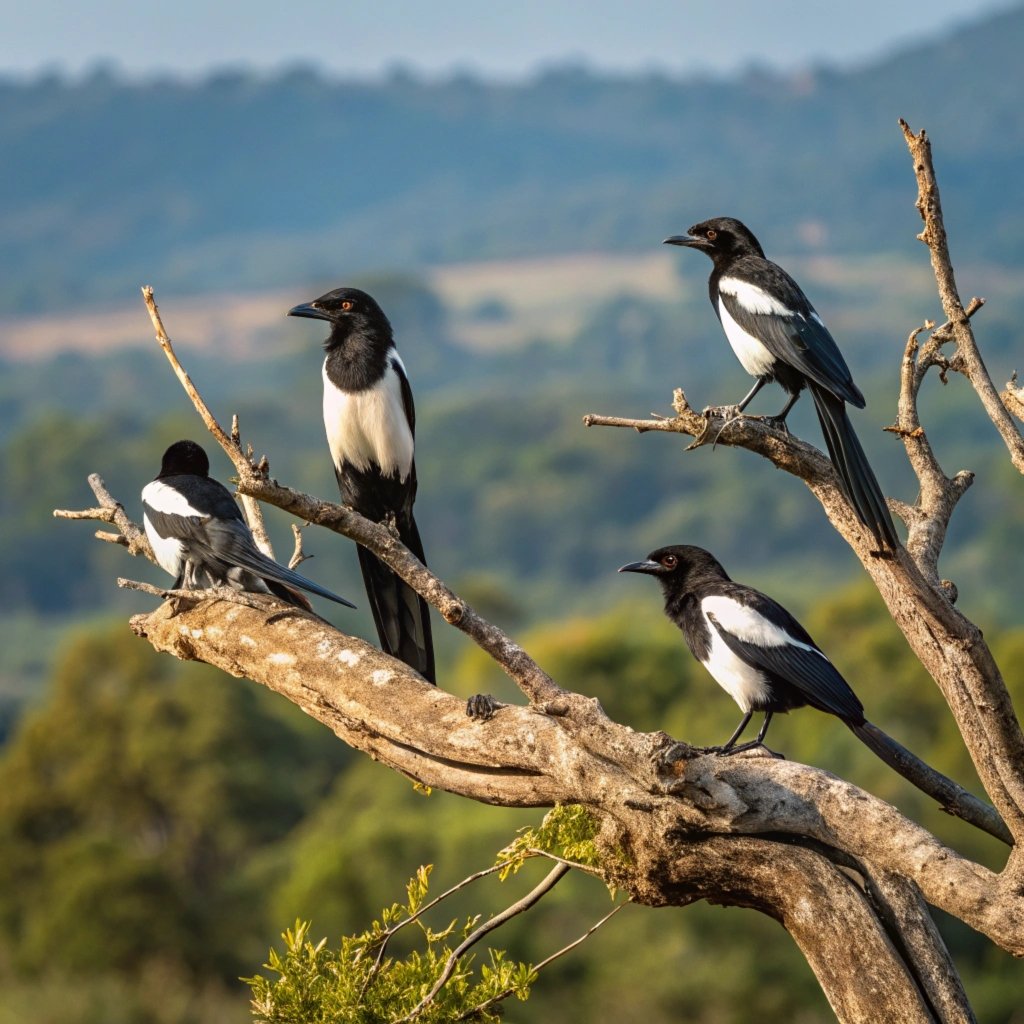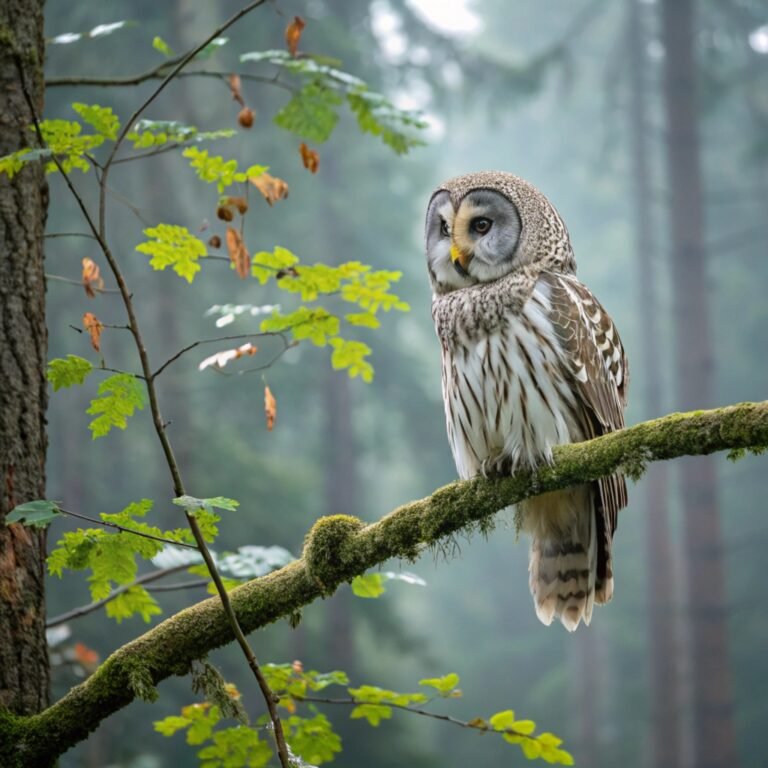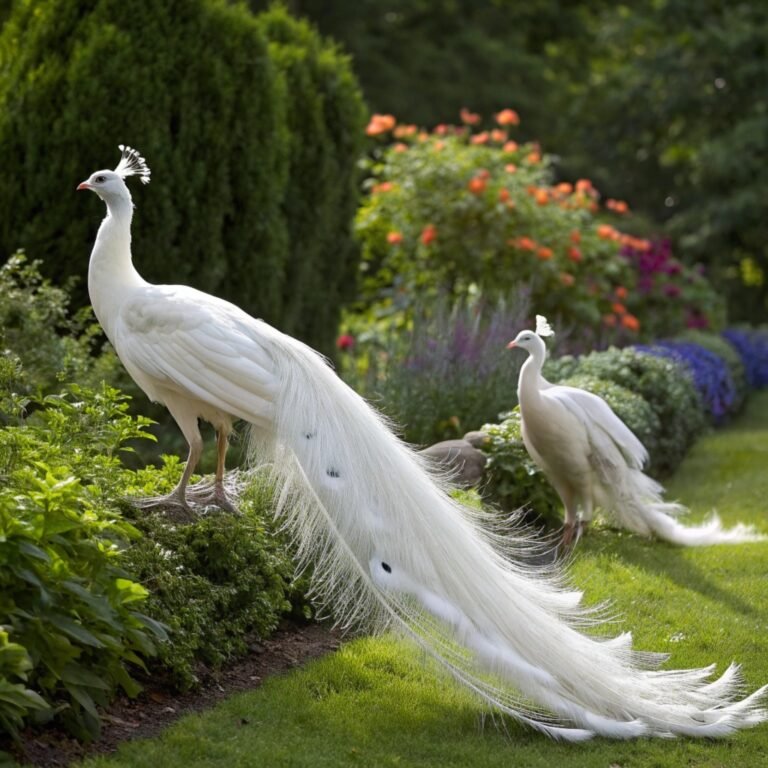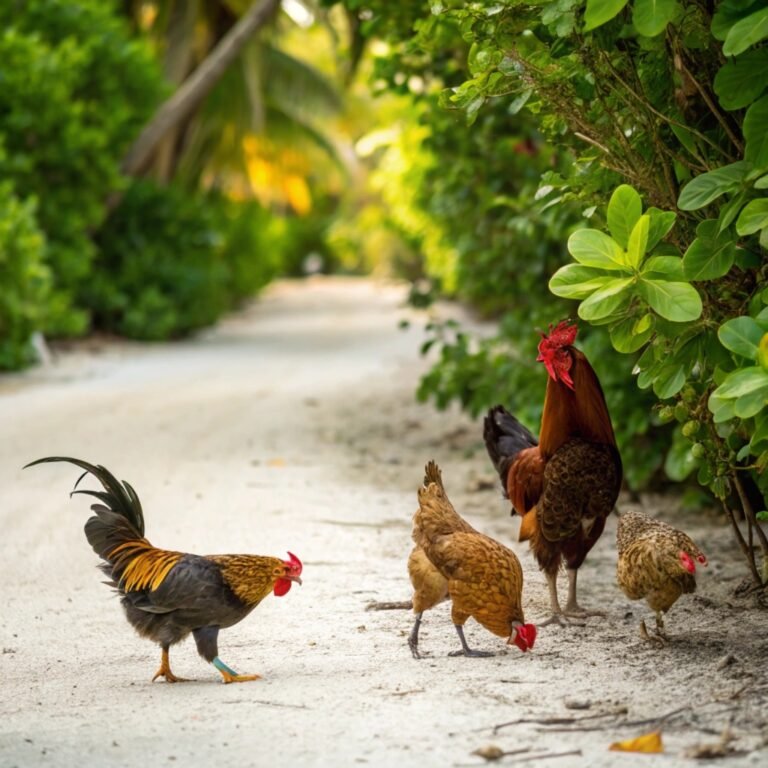12 Stunning Black and White Bird Species: A Comprehensive Guide to Nature’s Monochrome Marvels
Black and white birds are nature’s monochrome masterpieces, captivating observers with their striking plumage and unique behaviors. These avian wonders demonstrate that sometimes, less is more when it comes to coloration.
From the familiar chickadees in our backyards to the majestic pied avocets gracing wetlands, black and white birds offer a diverse array of species to admire and study.
In this comprehensive guide, we’ll explore 12 remarkable black and white bird species, delving into their distinctive features, habitats, behaviors, and conservation status.
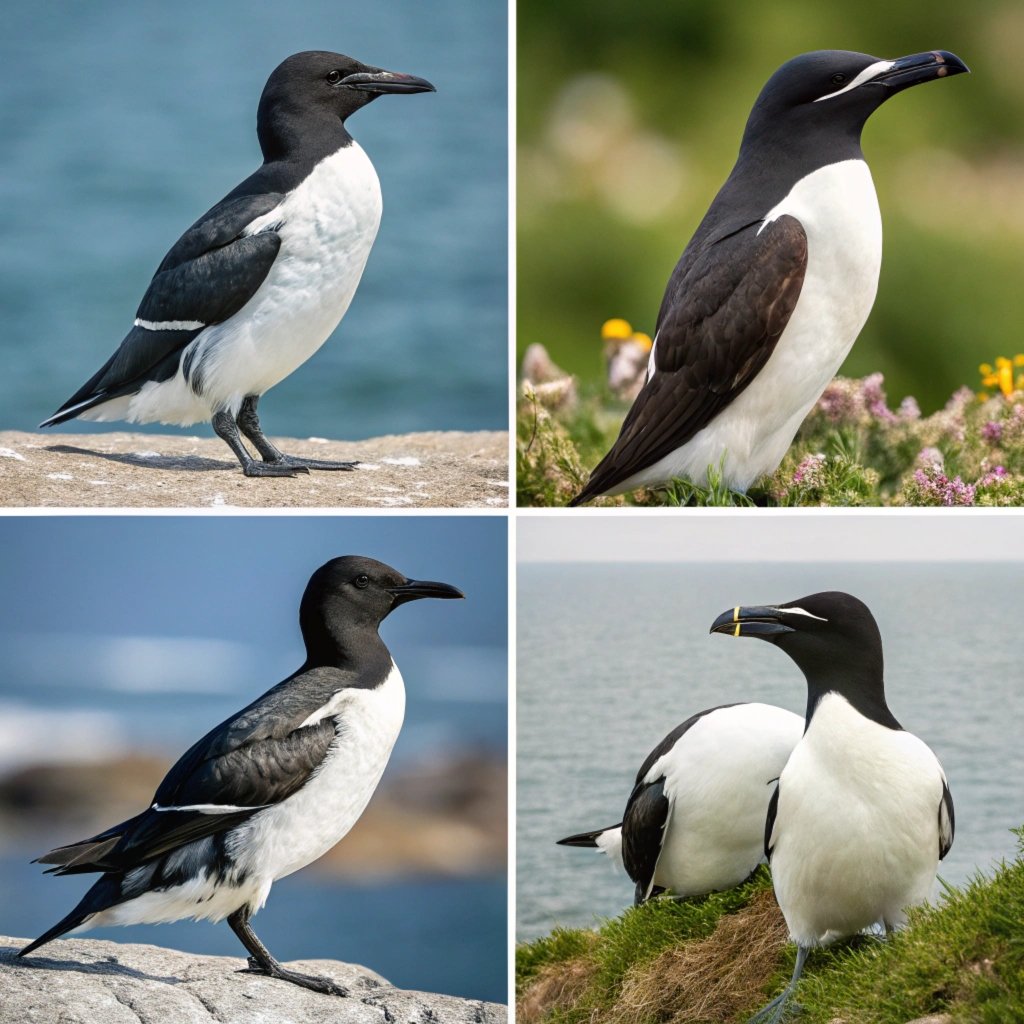
Key Takeaways:
- Black and white birds come in various shapes and sizes, from tiny warblers to large seabirds.
- Many black and white bird species have adapted to specific habitats, such as coastal areas, forests, or wetlands.
- Some black and white birds, like the Black-capped Chickadee, are common backyard visitors, while others, like the Black Skimmer, are more specialized.
- The contrast in coloration often serves specific purposes, such as camouflage or signaling to other birds.
- Several black and white bird species face conservation challenges due to habitat loss and climate change.
- Observing these birds can provide valuable insights into their behavior, ecology, and the health of their ecosystems.
- Many black and white birds have unique feeding adaptations, such as the Black Skimmer’s specialized bill for surface feeding.
- Some species, like the Paradise Flycatcher, exhibit sexual dimorphism with males displaying more prominent black and white plumage.
- Conservation efforts are crucial for protecting these stunning birds and their habitats for future generations to enjoy.
- Learning to identify black and white birds can be an excellent starting point for novice birdwatchers, as their distinctive patterns make them easier to recognize.
1. Black-Capped Chickadee
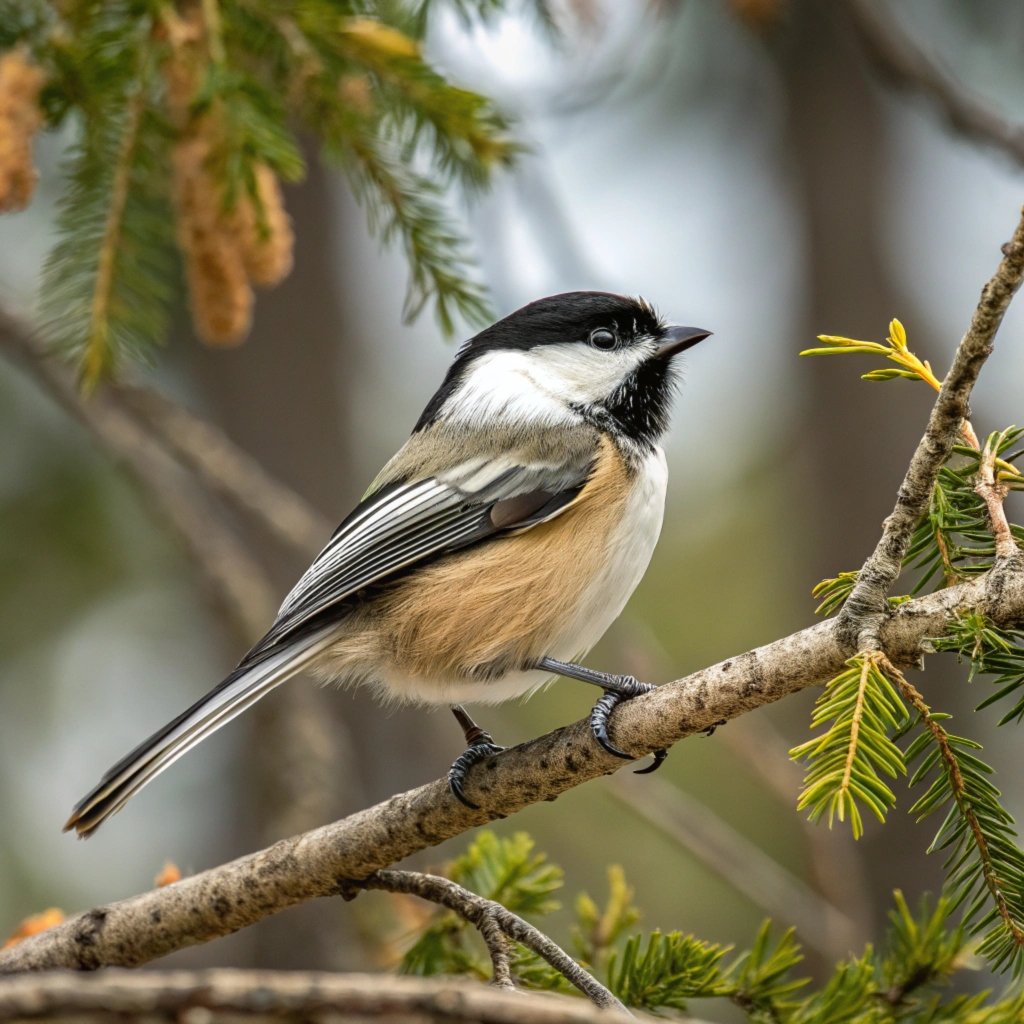
The Black-capped Chickadee (Poecile atricapillus) is a beloved backyard visitor known for its cheerful call and acrobatic feeding habits. These tiny birds measure about 12-15 cm in length and weigh only 10-14 grams.
Their distinctive appearance features a black cap and throat, contrasting sharply with their white cheeks. The body is primarily gray, with white edges on the wing feathers and a whitish underside.
Black-capped Chickadees are year-round residents in the northern United States and most of Canada, adapting well to various wooded habitats, including forests, parks, and suburban areas.
These social birds often form mixed-species flocks in winter, foraging alongside nuthatches, woodpeckers, and other small birds.
Their diet consists mainly of insects during the breeding season, switching to seeds and berries in winter. Chickadees are known for their remarkable memory, often caching food for later use and remembering hundreds of hiding spots.
2. Black and White Warbler
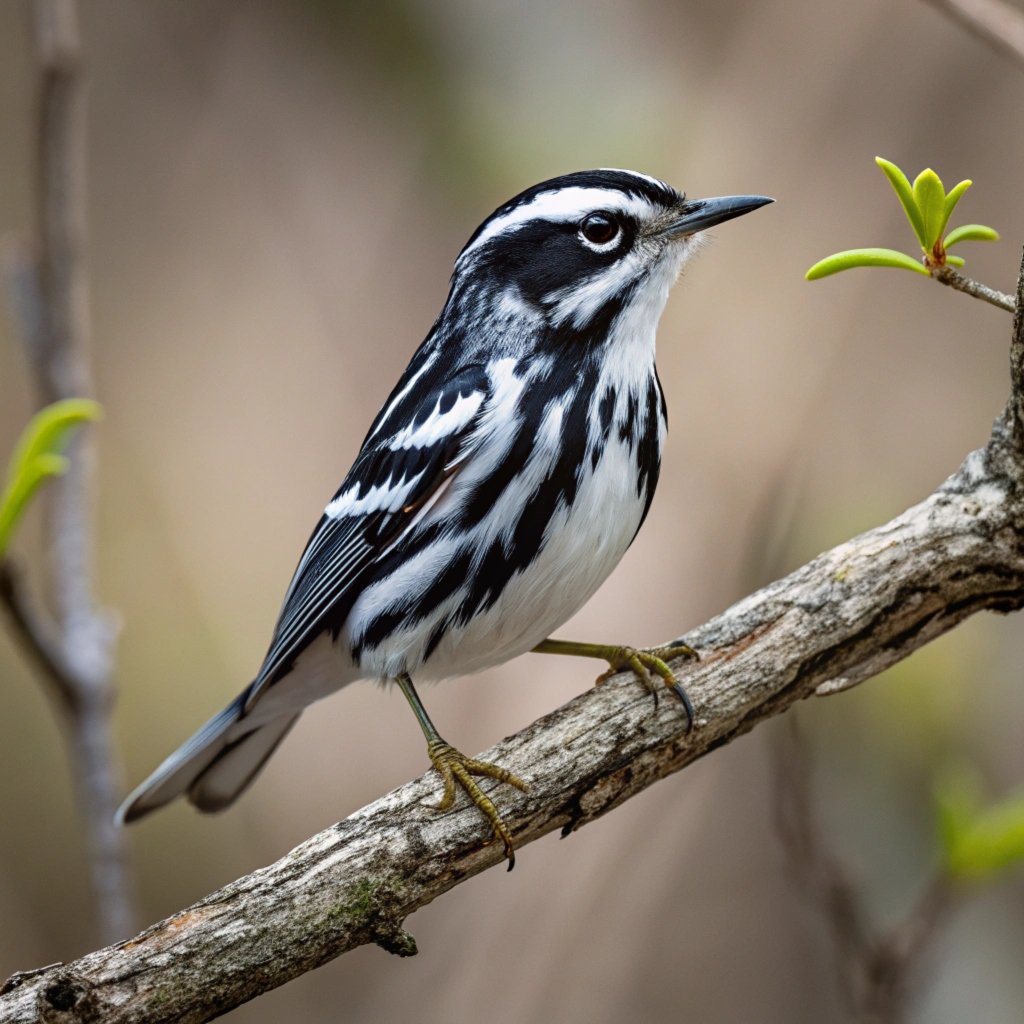
The Black and White Warbler (Mniotilta varia) is a striking songbird with a unique foraging behavior that sets it apart from other warblers. This small bird, measuring about 11-13 cm in length, is aptly named for its bold black and white striped plumage.
Males have more prominent black streaking, especially on the throat, while females show a slightly more subdued pattern.
Unlike most warblers that glean insects from leaves, the Black and White Warbler behaves more like a nuthatch, creeping along tree trunks and branches in search of insects hidden in bark crevices. This adaptation is supported by their strong legs and long, slightly curved claws.
These birds breed in deciduous and mixed forests across eastern North America, from Canada to the southeastern United States. During winter, they migrate to the Caribbean, Central America, and northern South America.
Their high-pitched, squeaky song is often described as sounding like a squeaky wheel. Conservation efforts focus on protecting their breeding and wintering habitats, as forest fragmentation poses a threat to their populations.
3. Pied Avocet
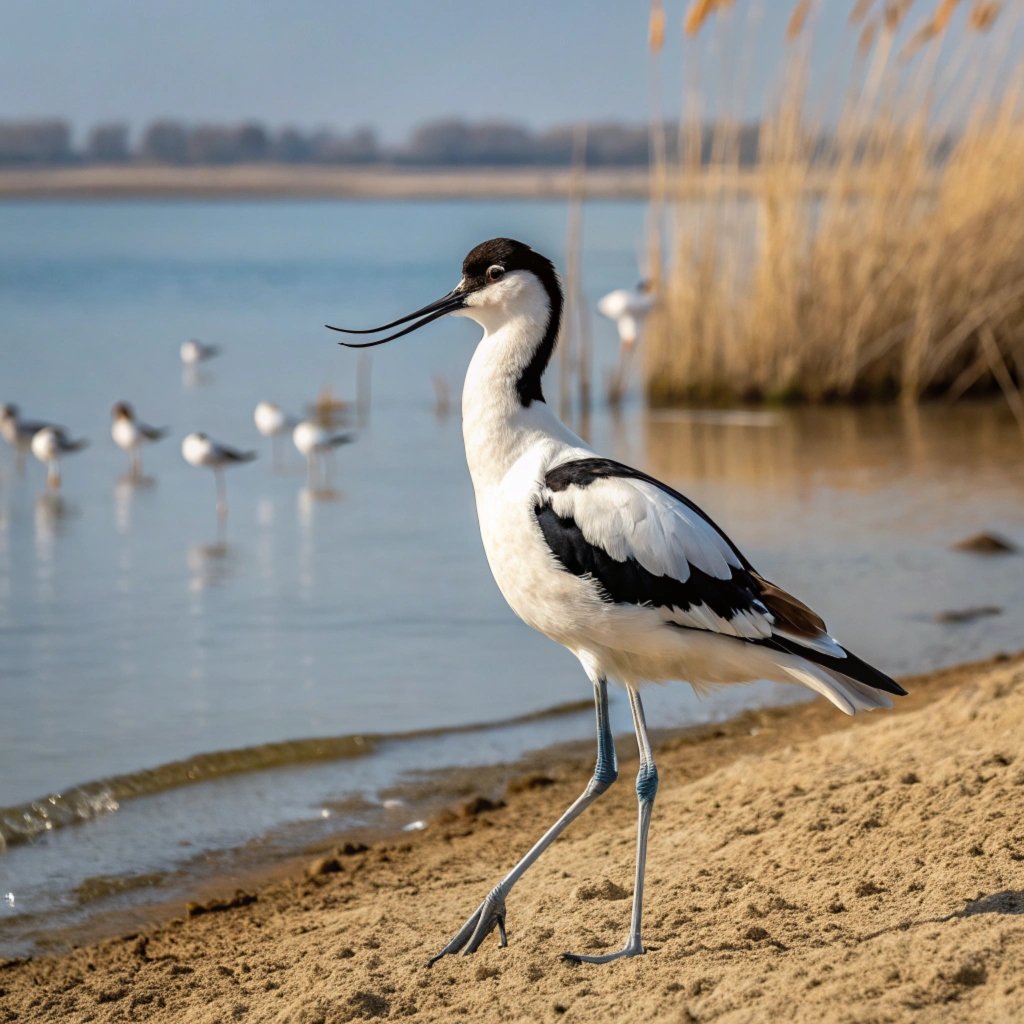
The Pied Avocet (Recurvirostra avosetta) is an elegant wading bird known for its distinctive upturned bill and striking black and white plumage. These long-legged shorebirds measure about 42-45 cm in length and have a wingspan of 77-80 cm.
Their plumage is primarily white, with bold black patches on the head, back, and wings, creating a dramatic contrast. The Pied Avocet’s most notable feature is its long, thin bill that curves upward at the tip, used for a unique feeding technique called ‘scything’.
They sweep their bills from side to side through shallow water or mud, catching small aquatic invertebrates. These birds inhabit coastal lagoons, estuaries, and shallow lakes across Europe, Central Asia, and parts of Africa.
During breeding season, Pied Avocets form large colonies and are known for their aggressive defense of nesting sites. Conservation efforts have helped recover their populations in some areas, particularly in the UK, where they were once extinct as breeding birds.
Today, they serve as a symbol of conservation success and are the emblem of the Royal Society for the Protection of Birds (RSPB).
4. Black Phoebe
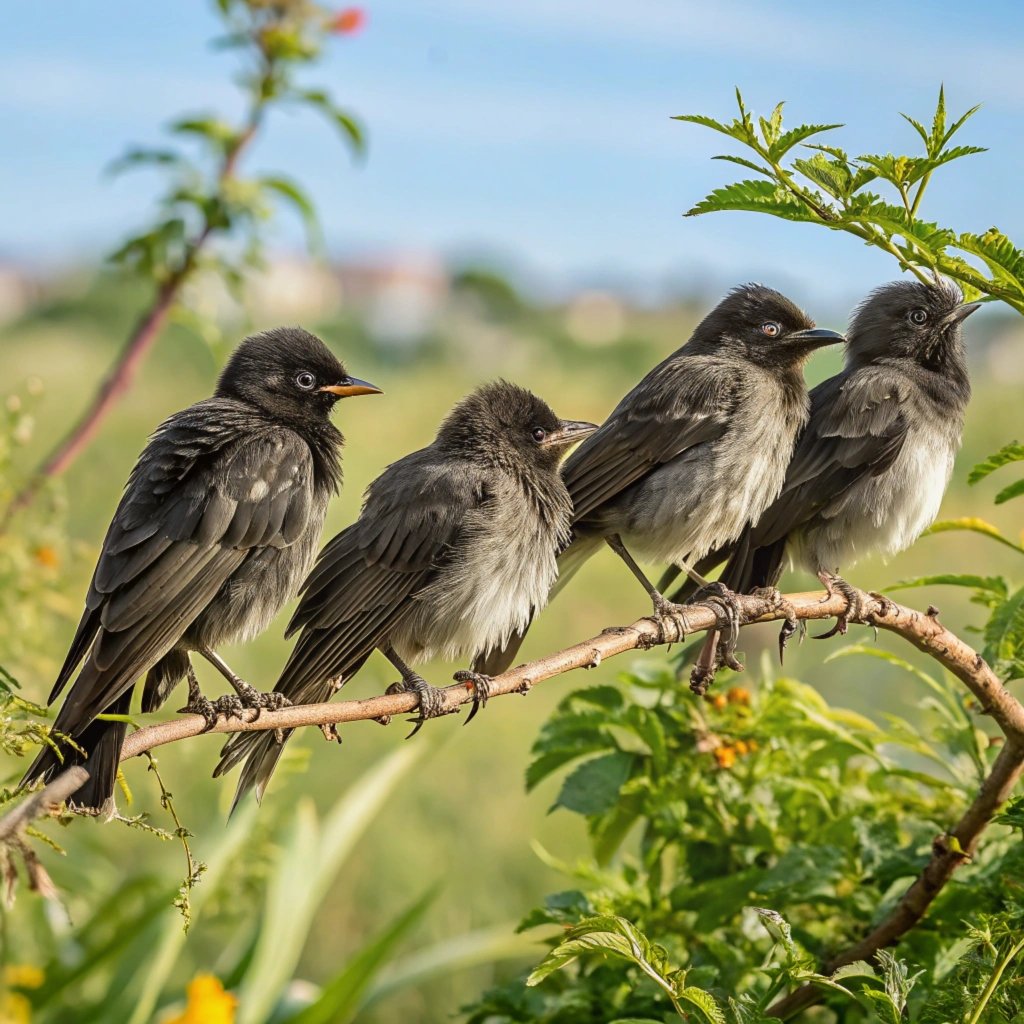
The Black Phoebe (Sayornis nigricans) is a charismatic flycatcher found near water sources in western North and Central America. This small bird, measuring about 16-18 cm in length, sports a sleek black plumage on its head, back, and breast, contrasting sharply with its white belly.
The Black Phoebe’s habit of wagging its tail while perched is a distinctive behavioral trait. These birds are often seen near streams, rivers, and ponds, where they hunt for flying insects from low perches.
Their adaptability to human-altered environments has allowed them to thrive in urban and suburban areas with water features. Black Phoebes construct mud nests on cliff faces, bridges, and buildings, often returning to the same nesting site year after year.
Their clear, whistled ‘fee-bee’ call is a familiar sound in their range. While not currently of conservation concern, maintaining clean water sources and preserving riparian habitats are crucial for their continued success. The Black Phoebe’s presence often indicates a healthy aquatic ecosystem, making them valuable bioindicators.
5. Eastern Kingbird
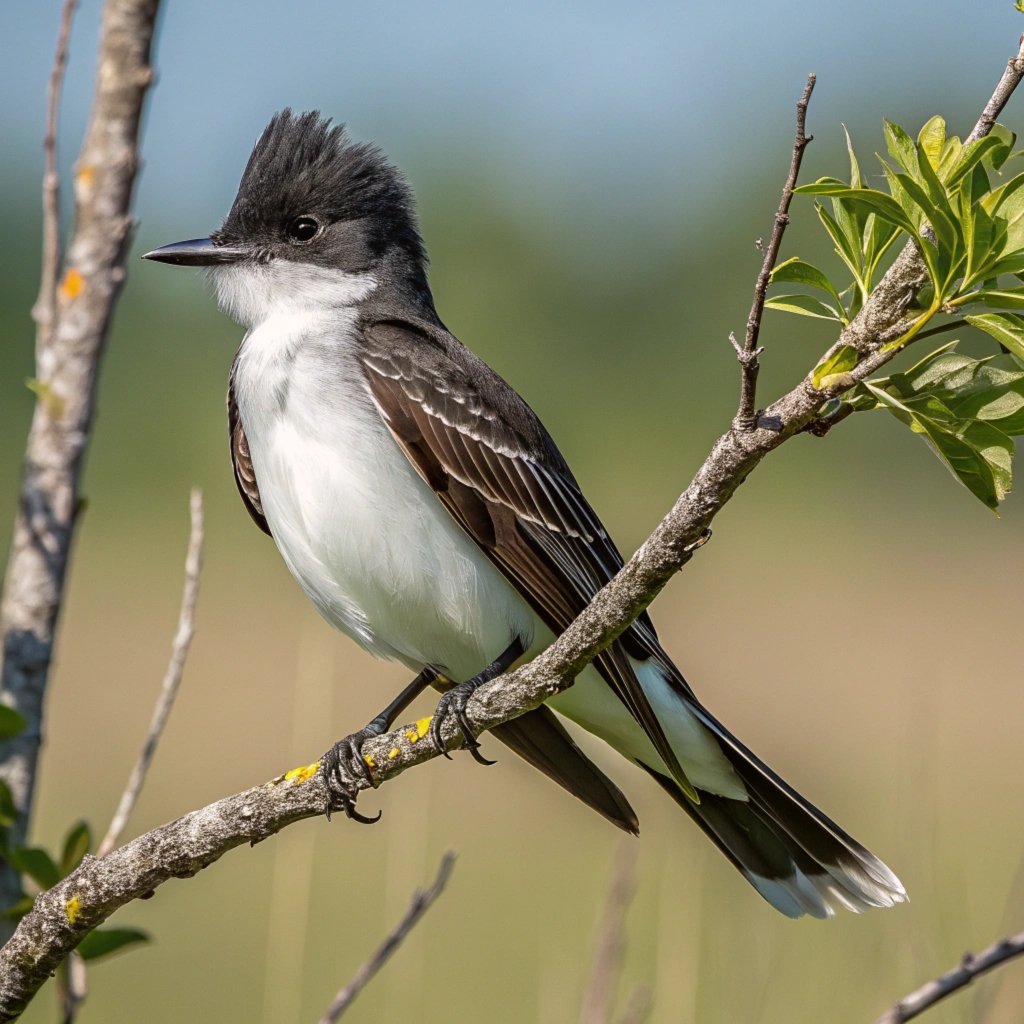
The Eastern Kingbird (Tyrannus tyrannus) is a bold and aggressive flycatcher known for its fearless defense of territory. These medium-sized birds, measuring about 19-23 cm in length, display a striking contrast of dark upperparts and white underparts.
Their most distinctive feature is the white band at the tip of their otherwise black tail. Eastern Kingbirds are summer residents across much of North America, from the Atlantic coast to the Rocky Mountains.
They prefer open habitats such as fields, orchards, and forest edges, often perching prominently on exposed branches or wires. Their diet consists primarily of flying insects, which they catch with acrobatic aerial maneuvers.
During the breeding season, Eastern Kingbirds fiercely defend their territories, even chasing away much larger birds like hawks and crows. This aggressive behavior has earned them the nickname “tyrant flycatcher”.
Interestingly, their winter behavior in the Amazon basin is quite different, where they become social and frugivorous. Conservation efforts focus on maintaining suitable breeding habitats and addressing threats along their migration routes.
6. Black Skimmer
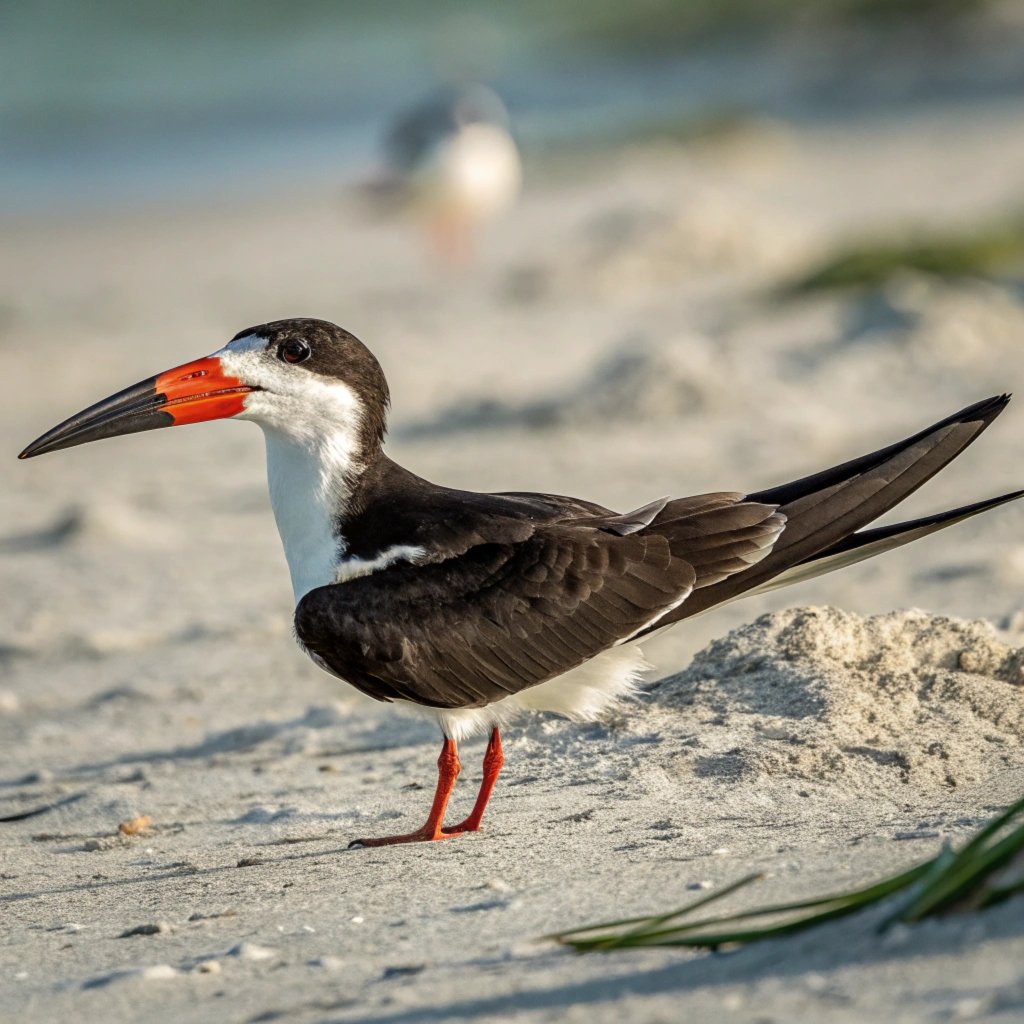
The Black Skimmer (Rynchops niger) is a fascinating seabird with a truly unique bill adaptation. These striking birds, measuring about 40-50 cm in length, have a distinctive black and white plumage with a black cap and back contrasting with their white underparts.
The Black Skimmer’s most remarkable feature is its specialized bill, where the lower mandible is significantly longer than the upper one. This adaptation allows them to ‘skim’ the water’s surface while flying, snatching up small fish and crustaceans.
Black Skimmers are found along coastal areas of the Americas, from the United States to Argentina. They nest in large colonies on sandy beaches and islands, often alongside terns and gulls. Their large, red and black bills and cat-like pupils give them a unique appearance among seabirds.
Black Skimmers are most active at dawn and dusk, when their prey is near the water’s surface. Conservation efforts focus on protecting their nesting habitats from human disturbance and predators.
Climate change and sea-level rise pose significant threats to their coastal breeding grounds, making them indicators of coastal ecosystem health.
7. Black-Throated Gray Warbler
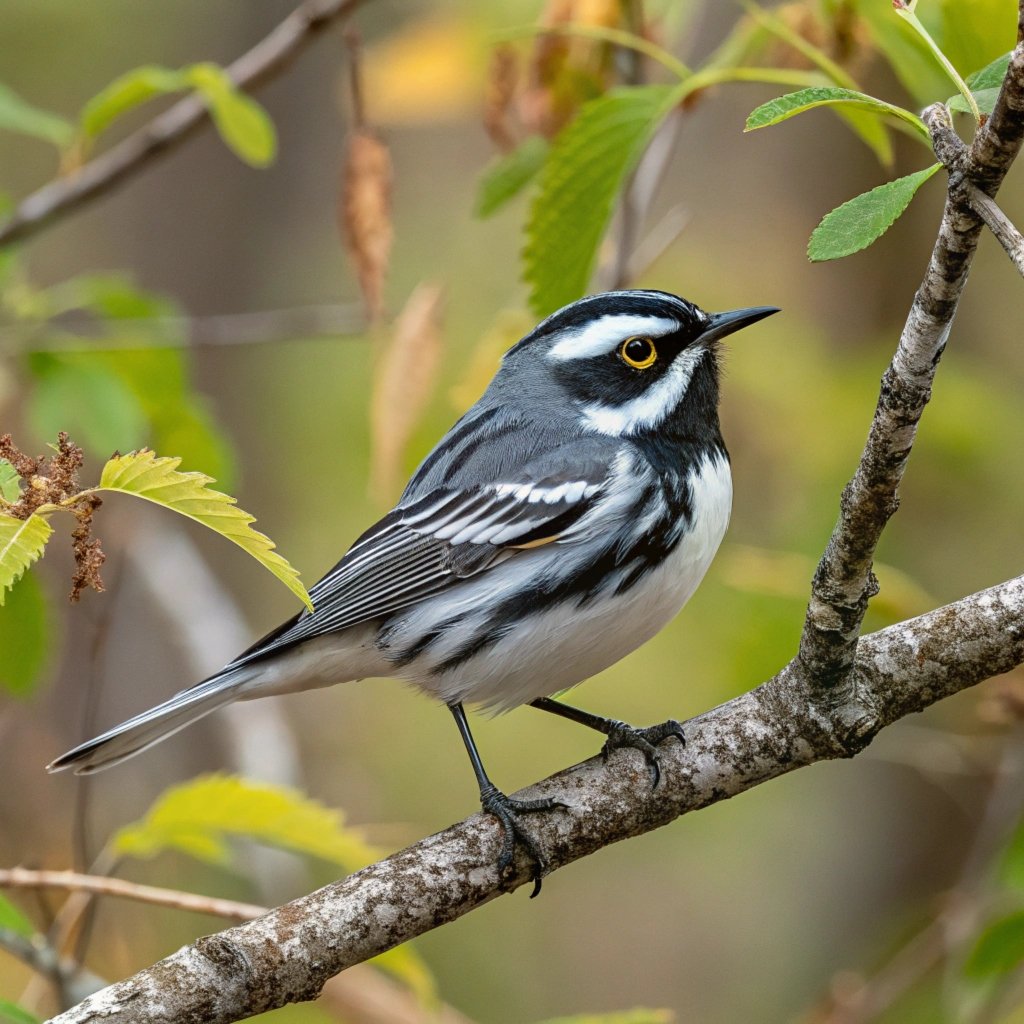
The Black-throated Gray Warbler (Setophaga nigrescens) is a small, active warbler found in the western parts of North America. These birds measure about 12-13 cm in length and display a striking pattern of black, white, and gray.
Males have a distinctive black throat and face with white stripes above and below the eye, while females show a similar but more subdued pattern. Their back is gray, and they have two white wing bars.
Black-throated Gray Warblers inhabit coniferous and mixed forests, particularly those with oak and juniper. They are known for their methodical foraging behavior, carefully searching for insects among leaves and branches.
During breeding season, these warblers can be found from British Columbia to northern Mexico, with a preference for higher elevations. Their song is a buzzy series of notes that accelerates towards the end.
While not currently of high conservation concern, these warblers face challenges from habitat loss due to logging and climate change. Maintaining diverse forest ecosystems is crucial for their long-term survival.
Birdwatchers appreciate the Black-throated Gray Warbler for its beauty and the challenge it presents in identification, as it can be confused with other black and white warblers.
8. Magpie Robin
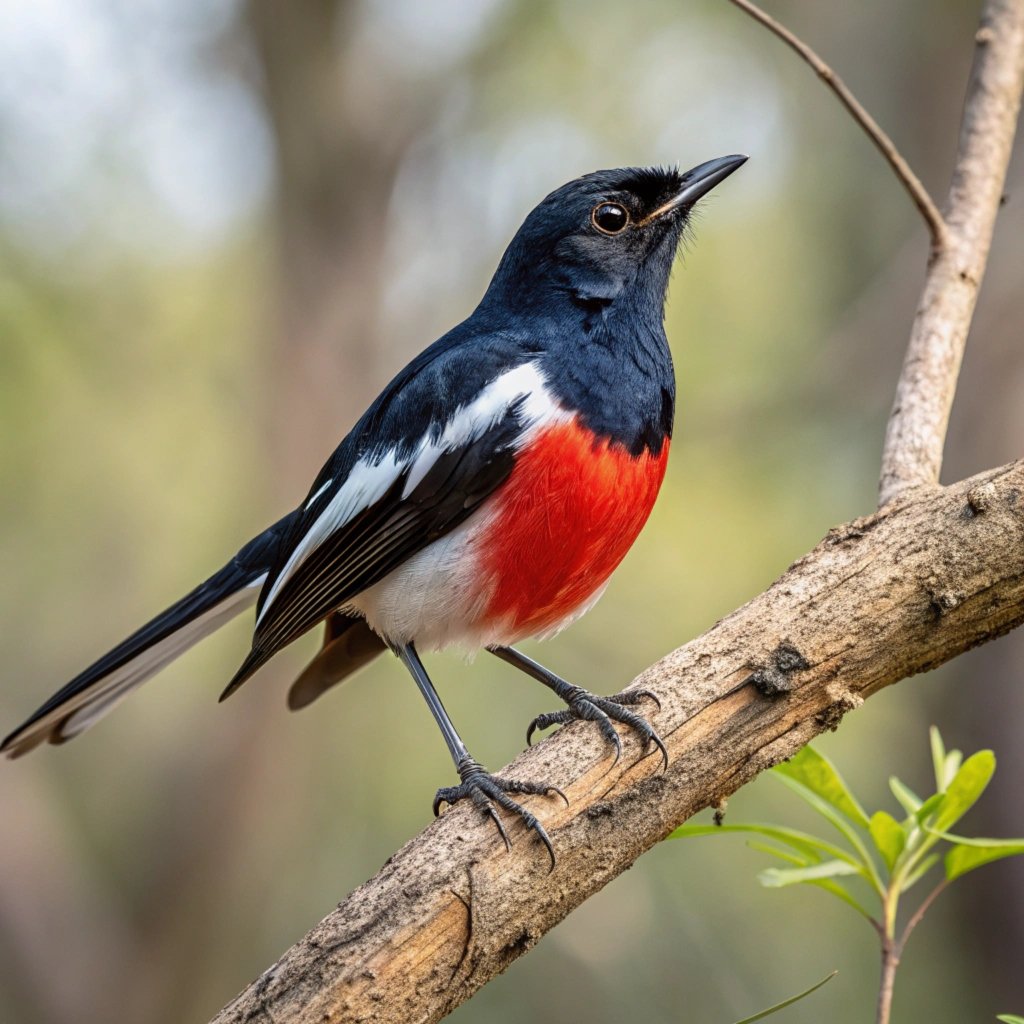
The Oriental Magpie Robin (Copsychus saularis), also known simply as the Magpie Robin, is a striking songbird found across much of South and Southeast Asia. These medium-sized birds, measuring about 19-20 cm in length, display a bold black and white plumage.
Males have a glossy black head, back, and tail, contrasting sharply with their white belly and wing patches. Females show a similar pattern but with gray replacing the black areas.
Magpie Robins are known for their beautiful, melodious songs, often mimicking other bird species. They are common in a variety of habitats, from urban gardens to forest edges, adapting well to human presence. These birds are ground feeders, often seen hopping on lawns in search of insects.
In some Asian cultures, Magpie Robins are highly valued for their songs and are sometimes kept as cage birds. Conservation efforts focus on maintaining urban green spaces and protecting their natural habitats.
The Magpie Robin’s ability to thrive in human-modified environments makes it an excellent ambassador for urban biodiversity. Its popularity and wide distribution have led to its selection as the national bird of Bangladesh.
9. Pied Bushchat
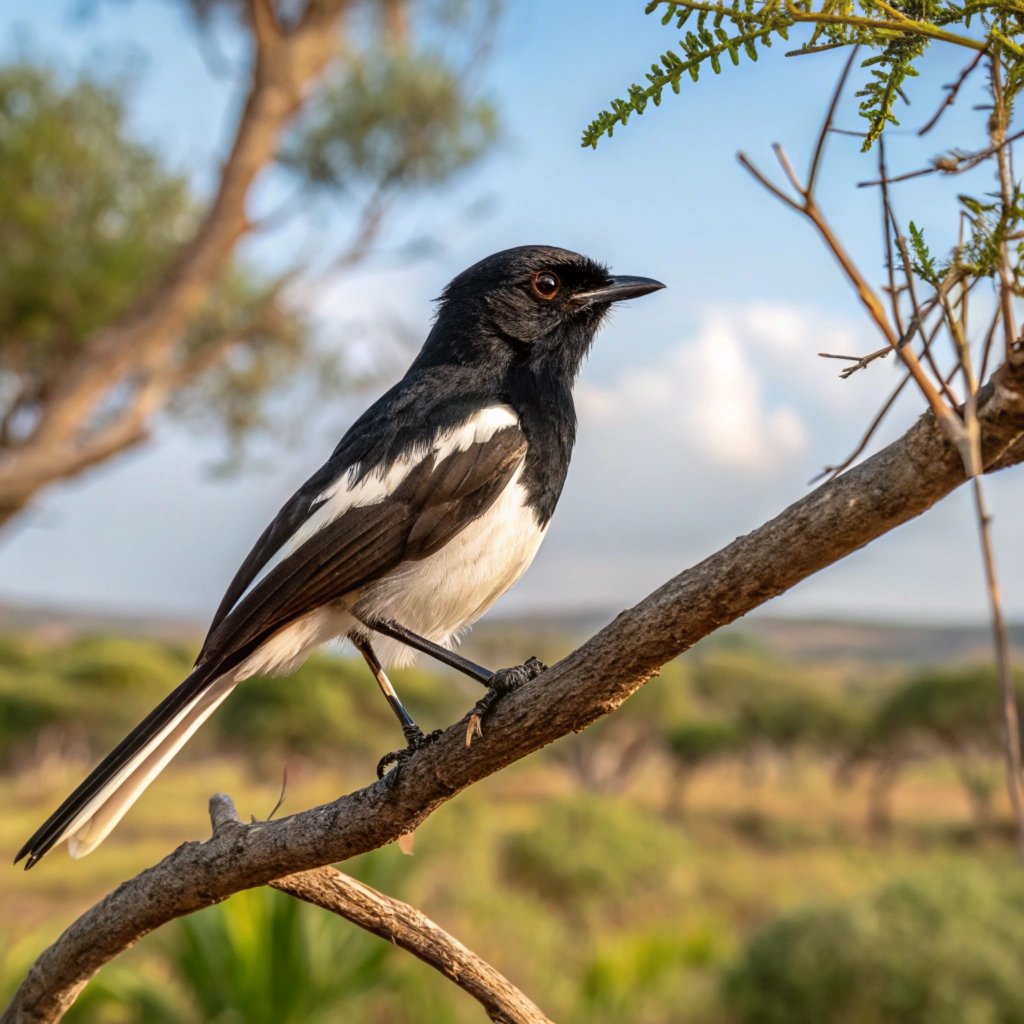
The Pied Bushchat (Saxicola caprata) is a small, charismatic bird found across parts of South and Southeast Asia. These birds measure about 13-14 cm in length and exhibit striking sexual dimorphism.
Males are predominantly black with a white rump and wing patches, while females are brown with a paler underside. Pied Bushchats are often seen perched prominently on fence posts, wires, or exposed branches, acting as little sentinels of their territory.
They inhabit a variety of open habitats, including grasslands, agricultural areas, and scrublands. These birds are insectivorous, catching their prey by making short flights from their perches.
During the breeding season, male Pied Bushchats perform elaborate courtship displays, including puffing up their feathers and singing vigorously.
Their adaptability to human-modified landscapes has allowed them to thrive in many areas, but they face challenges from habitat loss and agricultural intensification. Conservation efforts focus on maintaining diverse, insect-rich habitats and promoting wildlife-friendly farming practices.
The Pied Bushchat’s bold behavior and distinctive appearance make it a favorite among birdwatchers and nature enthusiasts in its range.
10. White-Browed Wagtail
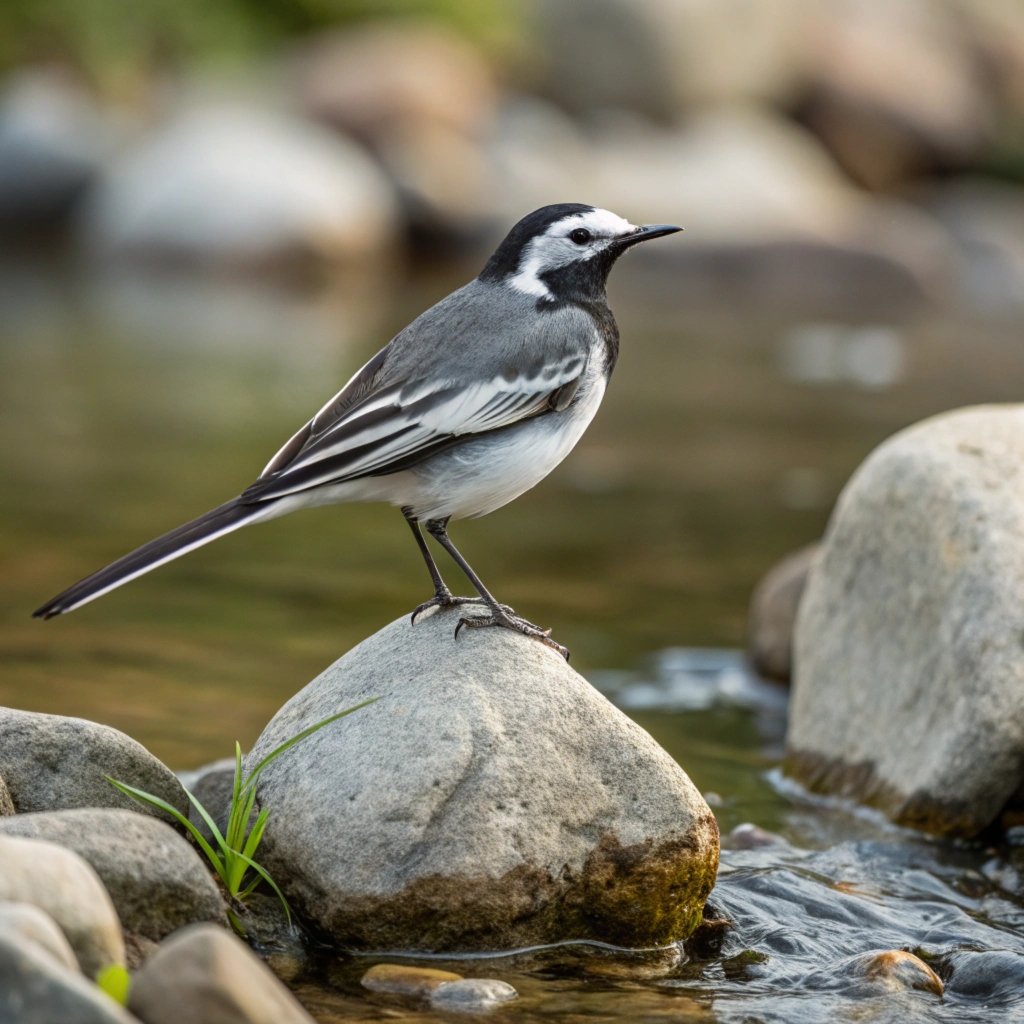
The White-browed Wagtail (Motacilla maderaspatensis), also known as the Large Pied Wagtail, is a striking black and white bird found in South Asia. These elegant birds measure about 21 cm in length and are the largest among the wagtail species.
They display a bold pattern of black upperparts and white underparts, with a distinctive white eyebrow stripe that gives them their name. White-browed Wagtails are often seen near water bodies, including rivers, streams, and even urban water features.
They have a characteristic habit of wagging their long tails up and down, hence their common name. These birds are ground feeders, primarily consuming insects and small invertebrates. They move with a graceful, dancing gait as they forage along the water’s edge.
White-browed Wagtails are known for their sweet, melodious songs and are often seen in pairs or small family groups. While they have adapted well to some urban environments, they rely on clean water sources and healthy riparian ecosystems.
Conservation efforts focus on protecting and restoring riverine habitats and reducing water pollution. Their presence often indicates a healthy aquatic environment, making them valuable indicators of ecosystem health.
11. Black-Winged Stilt
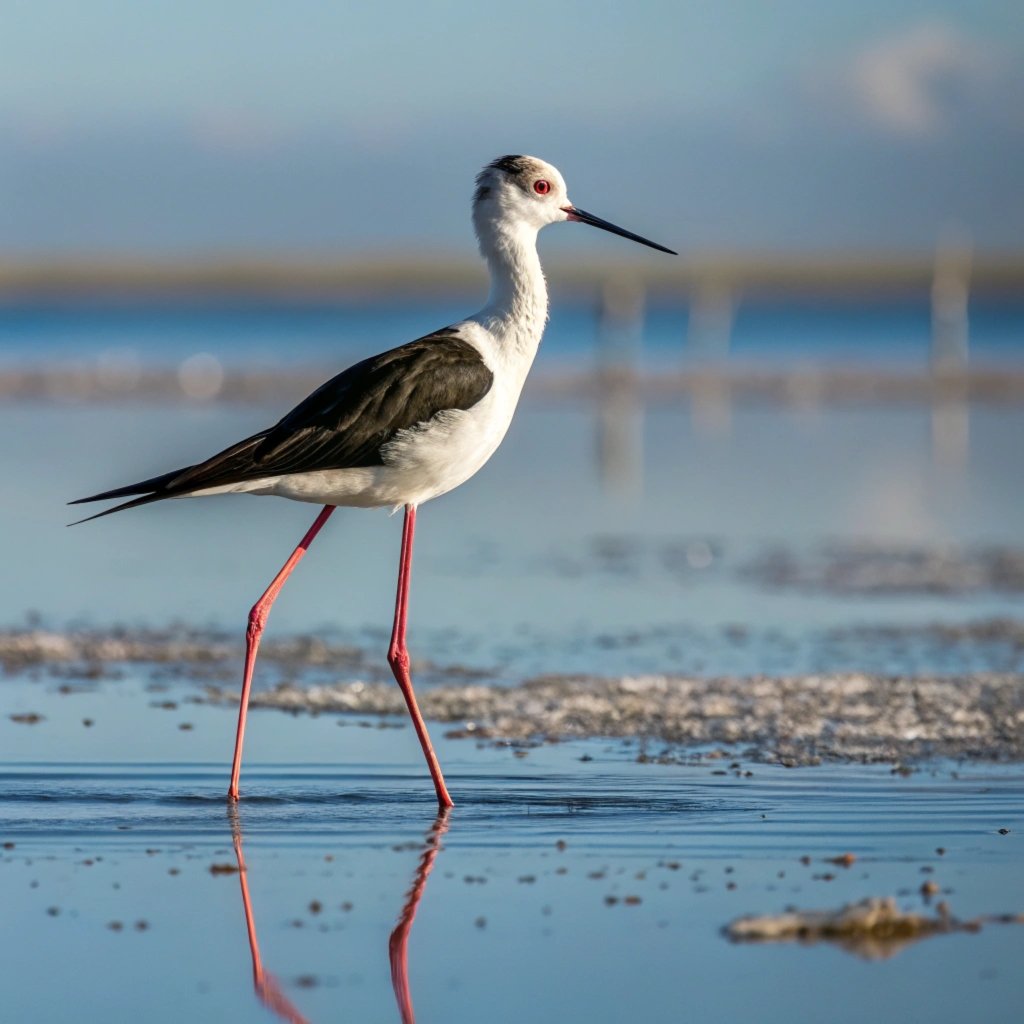
The Black-winged Stilt (Himantopus himantopus) is a striking wading bird known for its extremely long, pink legs and sleek black and white plumage. These elegant birds measure about 35-40 cm in length but stand much taller due to their long legs.
Their body is primarily white, with black wings and a black stripe extending from the back of the head down the neck. Black-winged Stilts inhabit shallow wetlands, including marshes, lagoons, and flooded fields across many parts of the world.
They are known for their graceful movements as they wade through shallow water, using their long bills to probe for aquatic invertebrates and small fish.
During breeding season, Black-winged Stilts form loose colonies and are known for their aggressive defense of nesting sites, often mobbing much larger birds that approach too closely. Their distinctive high-pitched calls are a common sound in their wetland habitats.
While adaptable to some human-modified environments, these birds face challenges from wetland drainage and pollution. Conservation efforts focus on protecting and restoring wetland habitats, crucial not only for Black-winged Stilts but for a wide range of other water birds and aquatic life.
12. Rook
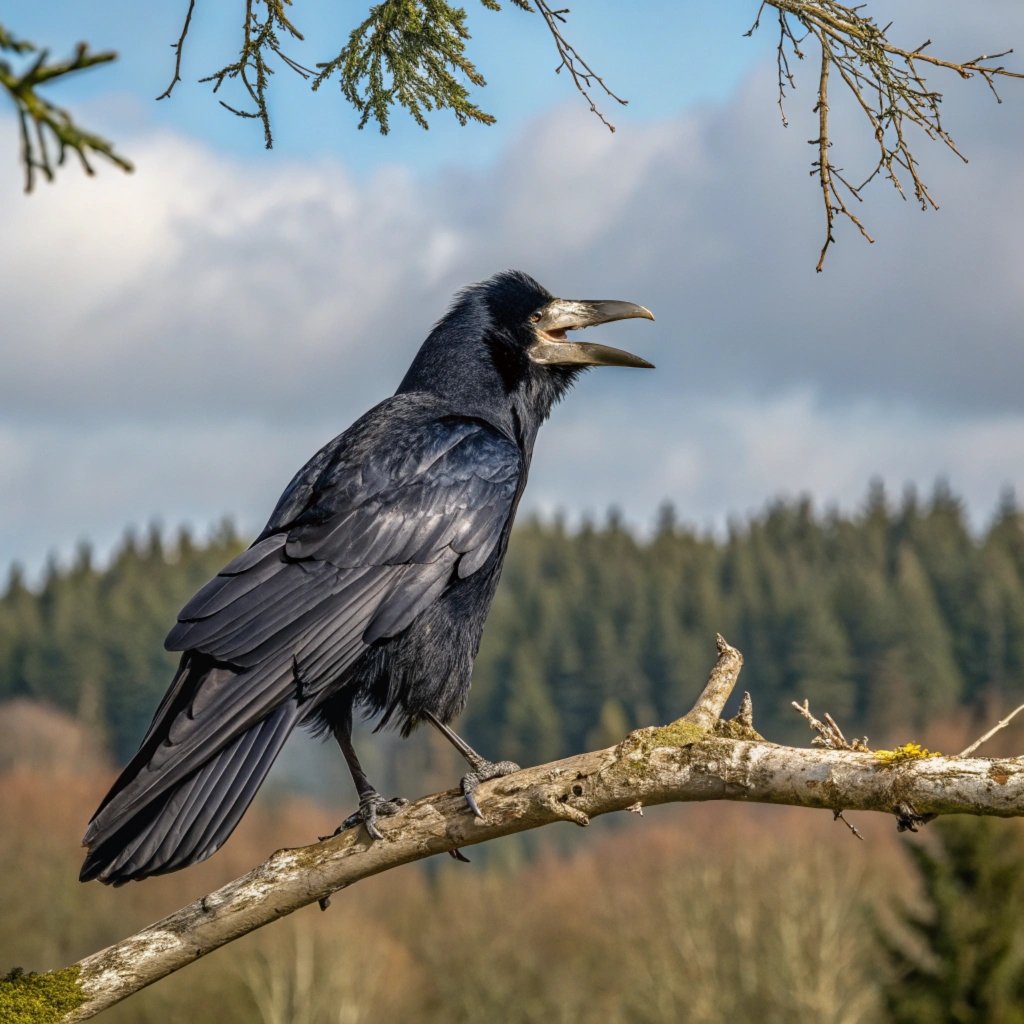
The Rook (Corvus frugilegus) is a large, gregarious member of the crow family, known for its intelligence and social behavior. These birds measure about 45 cm in length and have a distinctive appearance with black plumage that has a glossy, purple-blue sheen.
Adult Rooks are easily identified by their bare, grayish-white face and bill base, which contrasts with their otherwise black coloration. Rooks are primarily found across Europe and parts of western Asia, inhabiting open countryside, agricultural lands, and urban parks.
They are highly social birds, often seen in large flocks called “rookeries”. Rooks are omnivorous, feeding on a wide range of items including insects, grains, fruits, and small animals. They are known for their problem-solving abilities and tool use, demonstrating remarkable cognitive skills.
During breeding season, Rooks build large, communal nests in the tops of tall trees, creating noisy and bustling colonies. While generally common in their range, Rooks face challenges from changes in agricultural practices and urban development.
Conservation efforts focus on maintaining suitable nesting sites and promoting sustainable farming practices that support diverse bird populations. The Rook’s adaptability and intelligence make it a fascinating subject for both scientific study and casual observation.
FAQs
What is the smallest black and white bird species?
The Black-and-white Warbler is one of the smallest black and white bird species, measuring only about 11-13 cm in length. These tiny songbirds are known for their unique foraging behavior, creeping along tree trunks and branches like nuthatches.
Are all penguin species black and white?
While most penguin species are indeed black and white, not all of them follow this pattern strictly. For example, the Emperor Penguin has yellow patches on its ears and neck. However, the majority of penguin species do exhibit the classic black and white coloration, which serves as excellent camouflage in the water.
Are there any black and white birds that are endangered?
Yes, several black and white bird species face conservation challenges. For example, the African Penguin, also known as the Jackass Penguin, is classified as endangered due to factors such as overfishing, oil spills, and climate change affecting their habitat and food sources.
Can black and white birds see in color?
Most birds, including black and white species, can see in color. In fact, many birds have tetrachromatic vision, meaning they can see four primary colors compared to the three that humans can perceive. This includes the ability to see in the ultraviolet spectrum, which is invisible to human eyes.
Do any black and white birds change color seasonally?
Some black and white birds do undergo seasonal plumage changes. For instance, the Snow Bunting appears mostly white in winter but develops striking black and white breeding plumage in summer. However, most of the birds discussed in this article maintain their black and white coloration year-round.
Are there any black and white birds that are completely flightless?
Yes, the most well-known examples are certain species of penguins. While penguins are excellent swimmers and have wings adapted for underwater “flight,” they are unable to fly in the air. The Emperor Penguin and King Penguin are two large, flightless black and white bird species.
How do black and white birds use their coloration for mating displays?
Many black and white birds use their striking plumage in courtship displays. For example, male Paradise Flycatchers have long, flowing white tail feathers that they display prominently during mating rituals. The contrast between black and white feathers can create visually impressive displays that attract potential mates.
Are there any black and white birds that are known for their intelligence?
Yes, several black and white bird species are renowned for their intelligence. The Magpie, which has black and white plumage, is considered one of the most intelligent birds. They have demonstrated self-awareness, tool use, and problem-solving abilities. Rooks, mentioned in this article, are also known for their high intelligence and complex social behaviors.

Hello, I’m Emily Price, the founder of Birds Affection. As a passionate bird enthusiast and spiritual seeker, I’ve always been fascinated by the symbolic meanings and mystical connections between birds and our lives. On this website, I share my knowledge and insights on the spiritual significance of various bird species, exploring their roles as messengers, guides, and teachers. Through my writing, I aim to inspire and educate others on the profound wisdom and beauty that birds bring to our world. Join me on this journey as we delve into the enchanting realm of bird symbolism and discover the hidden meanings behind these magnificent creatures.

